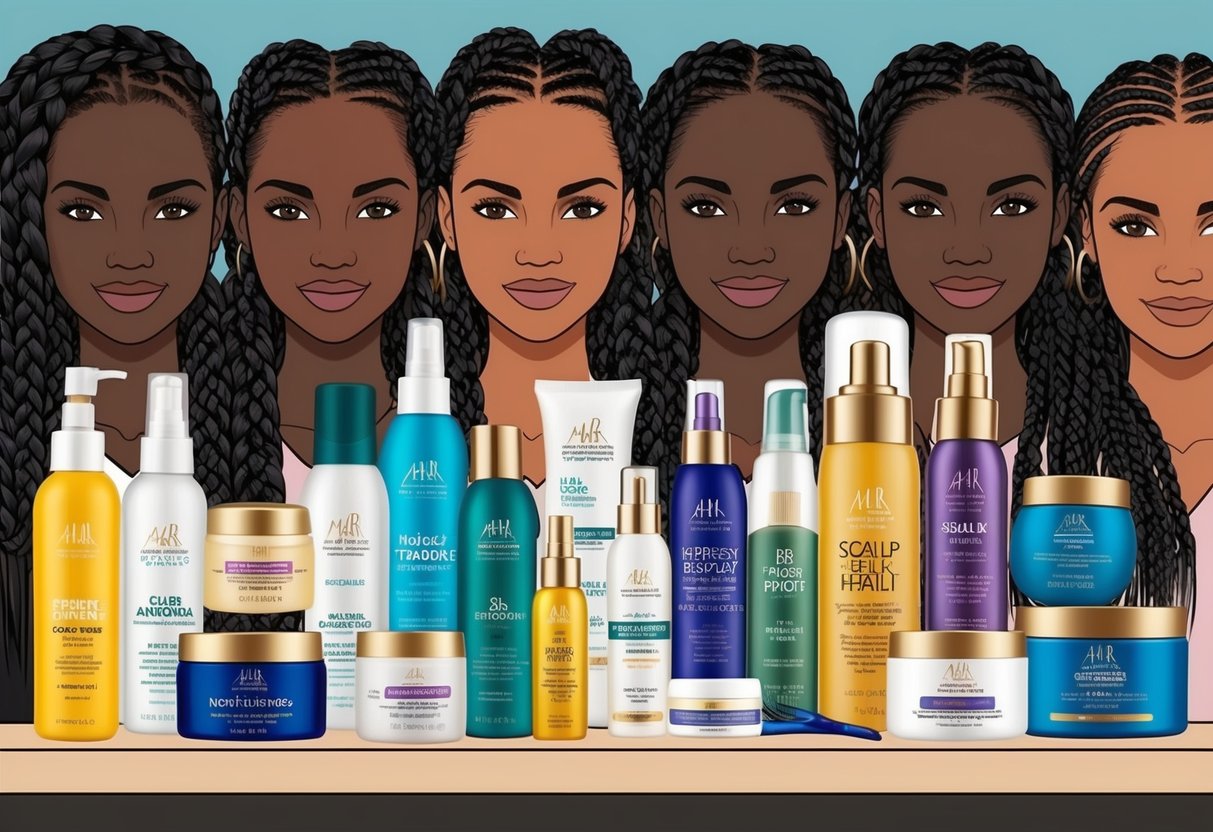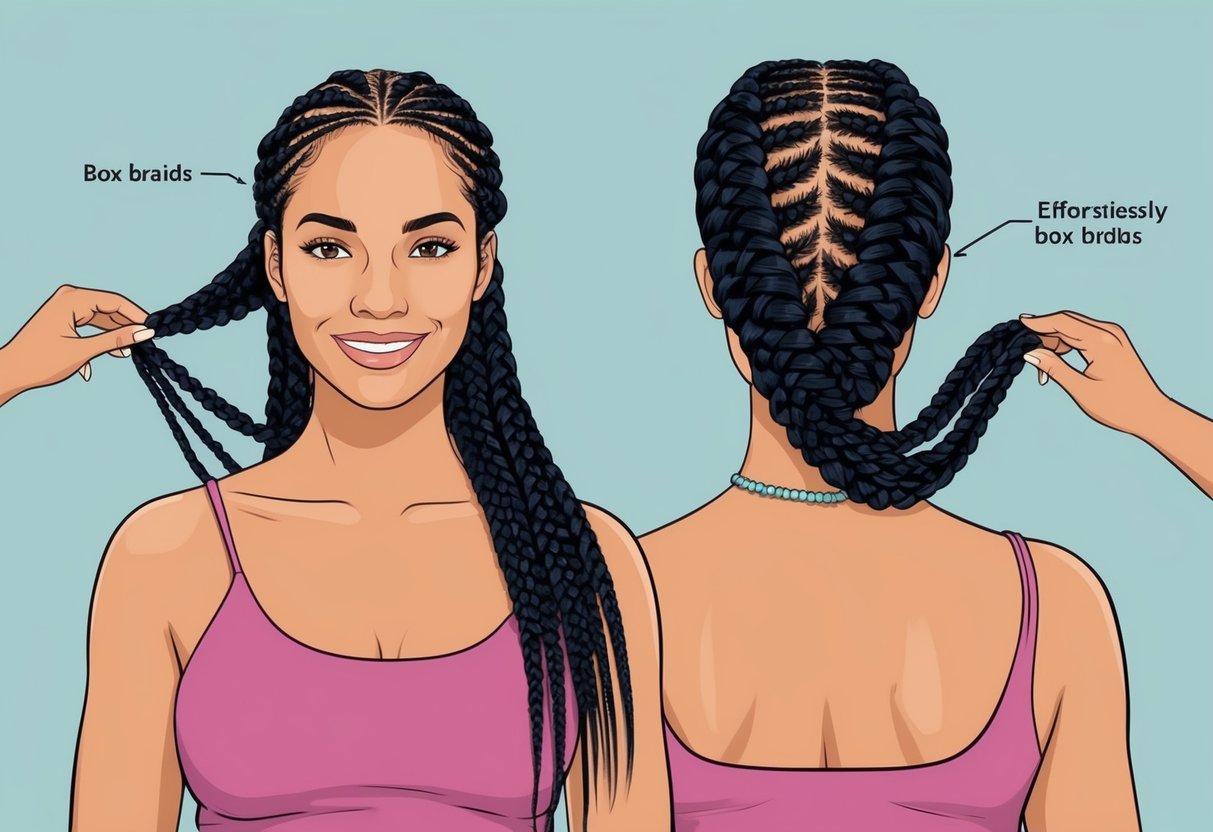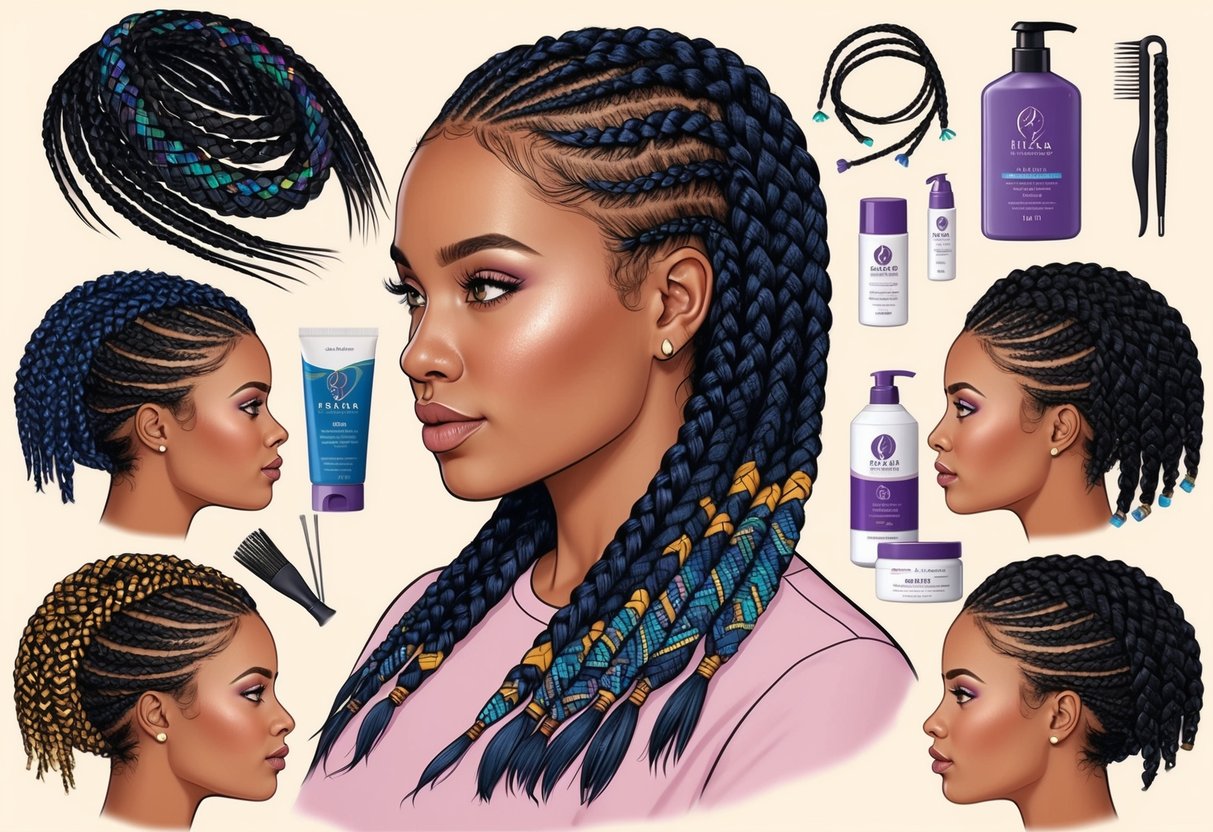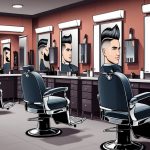
Moisturizing and Scalp Health for Braids

Keeping box braids looking neat and healthy requires targeted care to maintain moisture and support scalp health. Daily and weekly habits help prevent dryness, itchiness, and buildup, supporting both natural hair and protective styles.
Using Leave-In Conditioner and Oils
Applying a lightweight leave-in conditioner is essential for maintaining soft, manageable braids. A good leave-in helps restore moisture without leaving heavy residue, which can cause buildup and dullness.
Products like a spray leave-in or a water-based formula work well for natural hair in braids. Regularly using plant-based oils such as coconut oil, jojoba oil, or tea tree oil keeps the scalp nourished.
These oils can be applied directly to the scalp and braided sections using an applicator bottle for easier reach. Light oils reduce friction at the roots and lock in moisture, minimizing breakage.
For detailed product suggestions, see hairstylist recommendations for moisture care in braids.
Preventing Dryness, Dandruff, and Itchiness
Dryness, dandruff, and itchiness are common issues for braided styles. Keeping the scalp clean is critical; gentle washing with a moisturizing shampoo removes buildup without stripping essential oils.
A light, leave-in conditioner helps soothe itchiness, while oils like tea tree offer antimicrobial benefits to reduce flaking. Those prone to dandruff benefit from applying oil to the scalp in small amounts every few days, focusing on itchy or flaky areas.
Wrapping hair at night with a silk or satin scarf limits friction and scalp irritation. For step-by-step scalp care ideas, review this guide to braid-friendly scalp routines.
Easy Maintenance Techniques for Busy Lifestyles

Simple routines and protective strategies make it possible to keep box braids looking neat, even when time is limited. Consistent care protects hair health and ensures the longevity of any protective style.
Daily Care and Braid Refreshing
Daily care for box braids should involve gentle handling and quick, effective routines that fit busy schedules. Using a light, water-based leave-in conditioner or braid spray can help maintain moisture.
Focus on the scalp by massaging with lightweight oils to prevent itchiness and dryness. Dry shampoo or scalp wipes can be used between washes to keep the scalp feeling fresh and clean.
To reduce buildup and prolong the look of a protective hairstyle, avoid heavy creams or greasy products. If frizz appears at the roots or along the braids, a small amount of edge control gel can be applied with a soft brush.
Refreshing the edges and any loose braids around the perimeter every couple of weeks keeps the style looking crisp, as explained by tips for box braids upkeep on the L’Oréal Paris guide.
Include the following in a daily care routine:
- Moisturize scalp and braids lightly each day
- Use a scalp-friendly spray or oil
- Avoid over-styling or pulling the braids too tightly
Nighttime Protection Strategies
Protecting box braids overnight is crucial to prevent frizz and extend the life of the protective style. Always cover braids with a silk or satin scarf or use a bonnet; these smooth fabrics minimize friction, reducing frizz and preventing breakage while sleeping.
For extra protection, a satin or silk pillowcase adds another layer of defense. Longer or heavier braids can be gently gathered into a loose ponytail or braid before bed.
This prevents tangling and reduces tension on the roots. When possible, avoid sleeping with wet or damp braids to decrease the risk of scalp irritation and odor.
Key nighttime protection habits:
- Wear a silk or satin scarf/bonnet every night
- Sleep on a satin pillowcase
- Secure braids in a loose style to reduce stress on the scalp
These steps help maintain a neat look and promote healthy hair underneath the protective hairstyle throughout wear, as discussed in actionable tips from reputable sources such as the Glamorous Gleam guide.
Avoiding Common Box Braids Problems

Proper hair care and mindful braiding techniques are essential for maintaining healthy hair, reducing risks like breakage, thinning, and scalp discomfort. Paying attention to the right products, installation, and maintenance routines can protect natural hair and extend the life of box braids.
Thinning, Traction Alopecia, and Hair Loss
Tight box braids, especially small or heavy ones, can put excess tension on the hairline and scalp. This stress may lead to thinning edges, traction alopecia, and even irreversible hair loss if not addressed promptly.
Gentle installation is critical—stylists should avoid making braids too tight, particularly around delicate areas like the temples and nape. Signs of tension include bumps, headaches, or a sore scalp soon after braiding.
It’s important to speak up during installation if discomfort is felt, as loosening the braids early can help prevent long-term issues. Experts recommend keeping braids in for no longer than six to eight weeks, and giving hair a break of two to three weeks between styles to reduce cumulative damage, as detailed in this advice on protective styling breaks.
Common prevention methods include:
- Choosing larger or medium-sized braids to reduce weight on hair roots.
- Moisturizing the scalp with light oils or leave-in conditioners to maintain flexibility and decrease brittleness.
- Avoiding excessively small or very long braids that tug on fragile edges.



